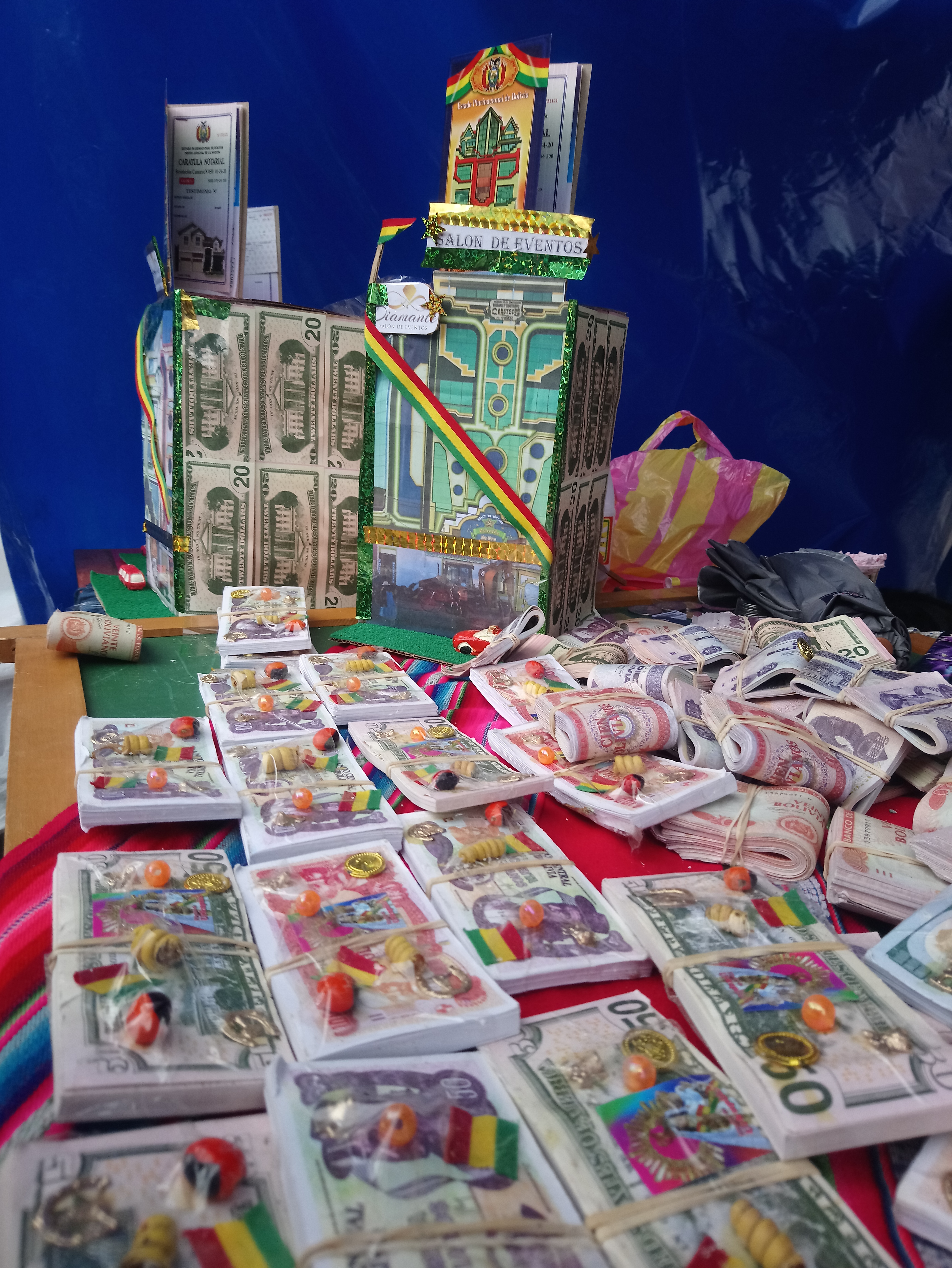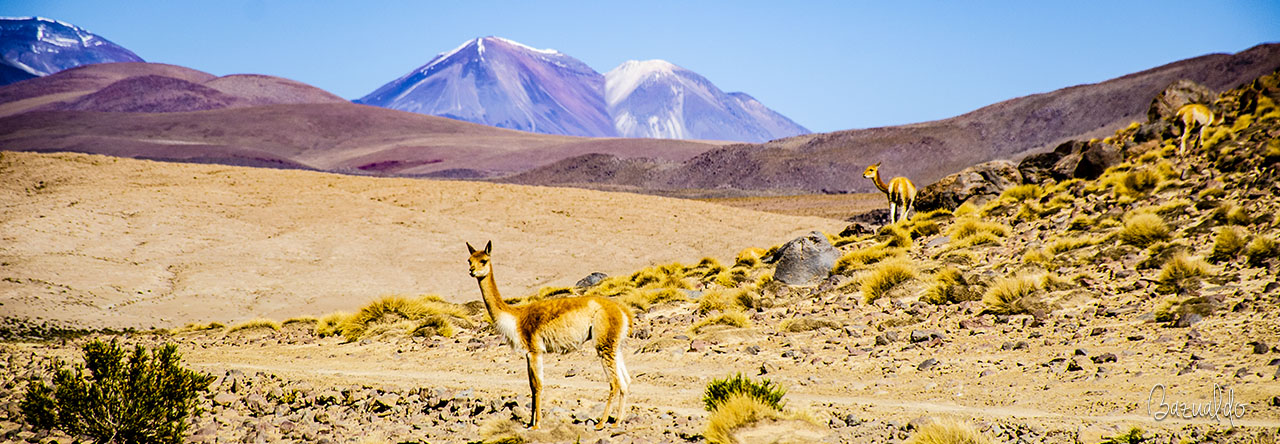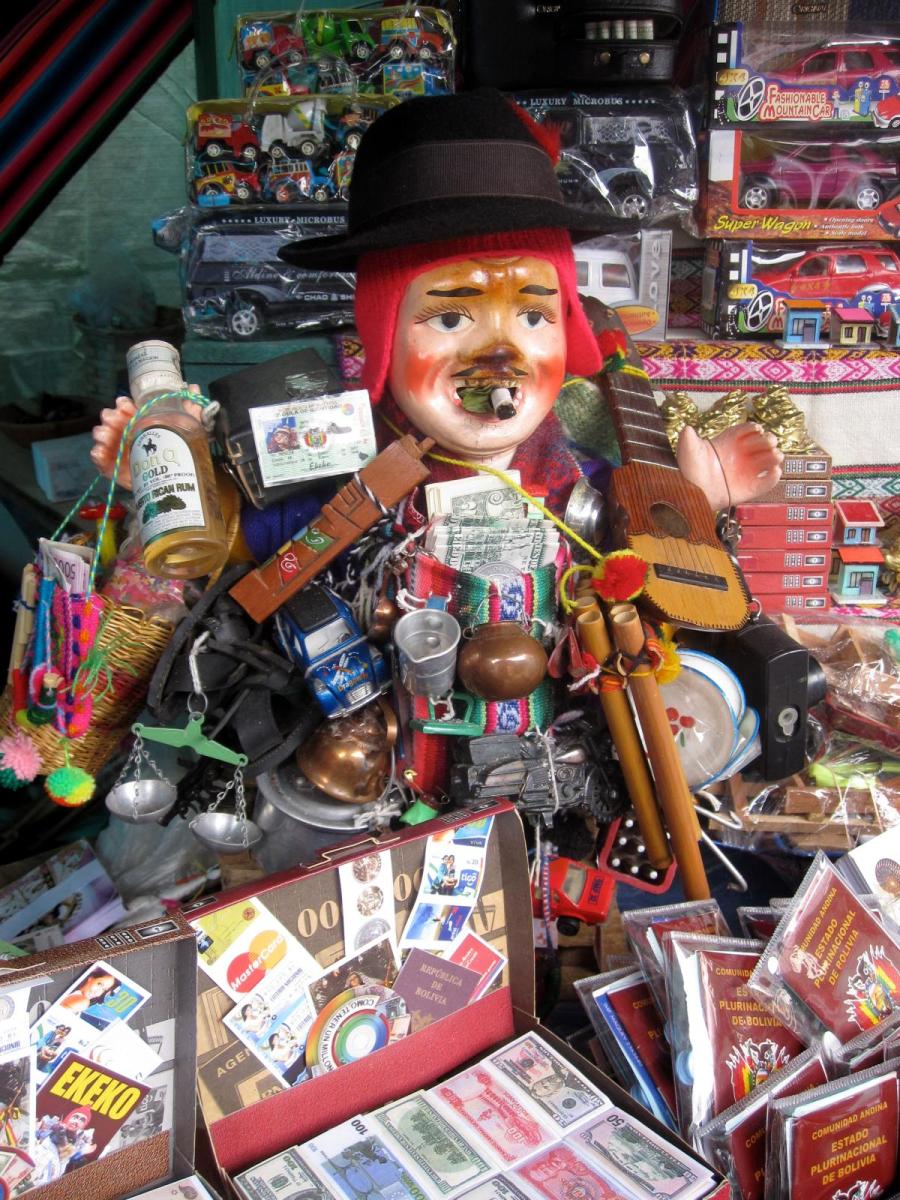
Every year on 24th January starts the annual Alasita festival in La Paz, Bolivia. It lasts for a month with stalls covered with miniature versions of houses, money bills, cereal boxes, passports, iPhone, diplomas, and all the items one may aspire to acquire during the year.
What is the alasita festival in Bolivia?
In Bolivia, Alasita is a place where one can also look for love in the shape of a rooster or a hen. To ensure that you will find love during that year, the rooster/hen has to be given to you. You cannot purchase it yourself. The birds have come to represent love and they come in different colors, each representing something: black ones are for widowers, yellow (or gold) are for people looking for a (very) rich partner, white ones represent purity and the red ones are more passionate. Some of them even have professions and different qualities depending on what you look in a partner.
Everything purchased at the fair needs to be blessed by priests and then offered to the Ekeko, the Andean God of Abundance. He’s easily recognizable by the bags of goods he carries, the chullo (traditional hat) and the cigarettes he’s smoking.
Other traditional and typical items people purchase are golden toads which represent Pachamama (Mother Earth) and are meant to bring fortune and prosperity to your home. Suitcases filled with money are also popular implying that money won’t be missing and that there will be opportunities to travel during the year. Food is another common purchase people make, with miniature boxes of pasta, rice, quinoa and other staples that you can buy.

Alasitas is popular festival that mixes indigenous beliefs and Catholicism, tradition and modernity, illustrating perfectly Bolivia’s complexities and idiosyncrasies. On the first day of Alasitas, at around 12:00pm people gather in and around the churches to have their items blessed by the Catholic priests in a vibrant display of syncretism. And it’s also more than that; Alasitas is a fun, convivial place with food and games, enjoyable for the whole family, where one can also find hand-crafted and artisan goods. Make sure to go and try the plato paceño, a local specialty with corn, cheese, meet and fava beans, and the unmissable api con pastel, a purple-corn drink accompanied by a deep-fried cheese empanada.
Alasitas can be enjoyed throughout the city during 30 days, especially on the first day but the fair is held in Parque Urbano in La Paz. The fair then moves to Santa Cruz in September, where it also stays for a month.
If you are travelling in Bolivia in January/February or September make sure not to miss the Alasitas fair. You can easily travel to La Paz and Santa Cruz and plan ahead your trip with Tickets Bolivia.


